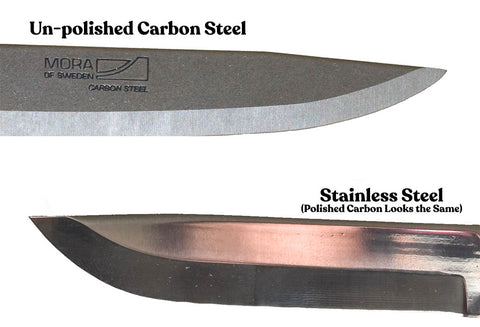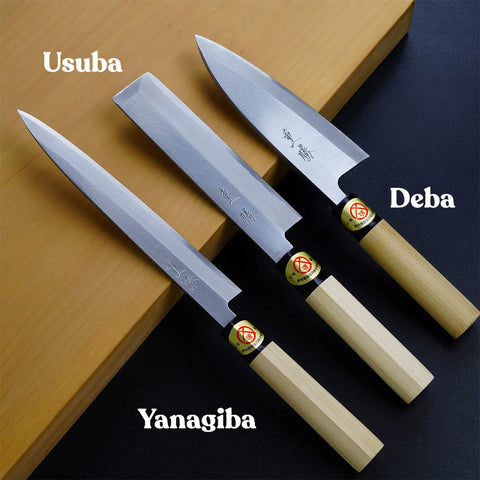Introduction: Unveiling the Mastery of Japanese Sushi Knives
Welcome to the world of Japanese culinary mastery, where the precision and craftsmanship of sushi knives take center stage. Japanese sushi knives are renowned for their unparalleled sharpness, meticulous design, and superior cutting performance. In this comprehensive guide, we will delve into the technical intricacies of Japanese sushi knives, examining their anatomy, exploring the various types of blades, and understanding the artistry that goes into their creation. Prepare to embark on a journey into the refined realm of Japanese culinary excellence!
1. The Anatomy of Japanese Sushi Knives: Understanding the Precision
To fully comprehend the technical brilliance of Japanese sushi knives, let us dissect their intricate anatomy:
A. Blade Construction: The Foundation of Perfection
The blade serves as the cornerstone of a sushi knife's performance, and Japanese sushi knives are expertly designed with the following considerations:
1. High-Quality Steel
Japanese sushi knives are typically forged using high-quality steel that is known for its exceptional sharpness, durability, and edge retention. The choice of steel can vary, with popular options including:
- Carbon Steel: Revered by traditionalists, carbon steel provides an unparalleled cutting edge, ensuring precise and clean cuts.
- Stainless Steel: Preferred for its low-maintenance properties and resistance to rust, stainless steel is a reliable choice for those seeking convenience without compromising performance.

2. Blade Thickness and Profile
Japanese sushi knives are meticulously crafted with varying thicknesses and profiles to suit specific cutting techniques:
- Thicker Blades: Knives with thicker blades, such as the deba knife, are designed for heavy-duty tasks like filleting fish and breaking down larger ingredients.
- Thinner Blades: Knives with thinner blades, like the yanagiba knife, excel at delicate slicing tasks, such as preparing sashimi.

B. Handle Design: Balancing Comfort and Control
The handle of a Japanese sushi knife is carefully crafted to provide a comfortable and secure grip, ensuring optimal control and maneuverability during precision cutting. Common handle materials include wood, composite materials, and even bamboo.
2. Types of Japanese Sushi Knives: Selecting the Perfect Blade
Japanese sushi knives come in a variety of types, each tailored to a specific task in the art of sushi preparation. Let's explore some of the most popular types:
A. Yanagiba: The Master of Slicing
The yanagiba knife, with its long, slender blade and single bevel design, is the epitome of precision slicing. It is primarily used for slicing sashimi, allowing chefs to create thin, uniform slices with ease.
B. Deba: The Butcher's Ally
The deba knife, characterized by its thick and robust blade, is the go-to tool for butchering fish and performing other heavy-duty cutting tasks. Its strength and durability make it indispensable in the world of sushi preparation.
C. Usuba: The Vegetable Virtuoso
The usuba knife, featuring a thin, flat blade, is the perfect companion for vegetable work in sushi preparation. Its sharp edge and precise cuts ensure the integrity of delicate vegetables, adding elegance and visual appeal to sushi presentations.

3. The Craftsmanship Behind Japanese Sushi Knives: A Legacy of Excellence
Japanese sushi knives are not just tools; they are works of art. The process of crafting these knives involves a fusion of traditional techniques and modern innovation. Here are the key elements of the craftsmanship behind Japanese sushi knives:
A. Forging: From Raw Steel to Refined Blade
Japanese sushi knives are often forged using a process called "honyaki" or "kasumi." This involves heating and shaping the raw steel, followed by a meticulous tempering process that ensures the blade's hardness, flexibility, and resilience.
B. Honing and Sharpening: The Quest for Razor-Sharp Precision
The honing and sharpening of a Japanese sushi knife require utmost skill and precision. Experienced craftsmen use water stones or whetstones to refine the blade's edge, achieving razor-like sharpness that is crucial for the delicate art of sushi preparation.
C. Tradition Meets Innovation: Mastering the Balance
While Japanese sushi knife craftsmanship is steeped in tradition, modern advancements have introduced innovative elements to enhance performance and durability. For example, some knives incorporate modern materials, such as powdered steel, to achieve an optimal balance of sharpness and strength.
4. Care and Maintenance: Preserving the Beauty and Performance
Proper care and maintenance are vital to preserve the beauty and performance of Japanese sushi knives. Follow these guidelines to ensure your knives remain in pristine condition:
A. Hand Washing: Gentle Cleansing for a Precious Blade
Always wash your Japanese sushi knives by hand, using warm water and a mild dishwashing detergent. Gently dry the blades immediately after washing to prevent moisture-related issues and maintain their pristine condition.
B. Honing and Sharpening: The Key to Longevity
Regular honing and sharpening sessions are essential to maintain the edge of your Japanese sushi knives. Use a honing rod to realign the blade and a sharpening stone to restore its sharpness when needed.
C. Proper Storage: A Safe Haven for Your Precious Tools
Store your Japanese sushi knives in a knife block, knife roll, or a wooden saya (sheath) to protect the blades from damage and to ensure your safety when handling them. Avoid storing them in drawers or with other utensils to prevent accidental nicks and dulling of the blades.
FAQs (Frequently Asked Questions)
Q: Can I use Japanese sushi knives for tasks other than sushi preparation?
A: While Japanese sushi knives are specifically designed for sushi and sashimi preparation, their exceptional cutting performance makes them versatile tools suitable for various culinary tasks. However, it's recommended to use them primarily for their intended purpose to maintain their edge and prolong their lifespan.
Q: Are Japanese sushi knives suitable for left-handed individuals?
A: Yes, many Japanese sushi knife manufacturers offer left-handed versions of their knives. These knives feature a mirrored blade and a handle designed to accommodate the grip of left-handed users.
Q: How often should I sharpen my Japanese sushi knives?
A: The frequency of sharpening depends on your usage and the condition of the blade. As a general guideline, it's recommended to sharpen your Japanese sushi knives every few months or when you notice a decline in cutting performance.
Conclusion: The Epitome of Culinary Precision
Japanese sushi knives embody the pinnacle of culinary precision, combining exquisite craftsmanship with technical mastery. From their meticulously forged blades to their ergonomic handles, these knives are the tools of choice for sushi chefs and culinary enthusiasts seeking the highest level of precision in their culinary creations. By understanding the anatomy, types, and craftsmanship behind Japanese sushi knives, you can elevate your own culinary skills and embark on a journey of precision cutting. Embrace the elegance of Japanese sushi knives and unlock the true artistry of sushi preparation!

